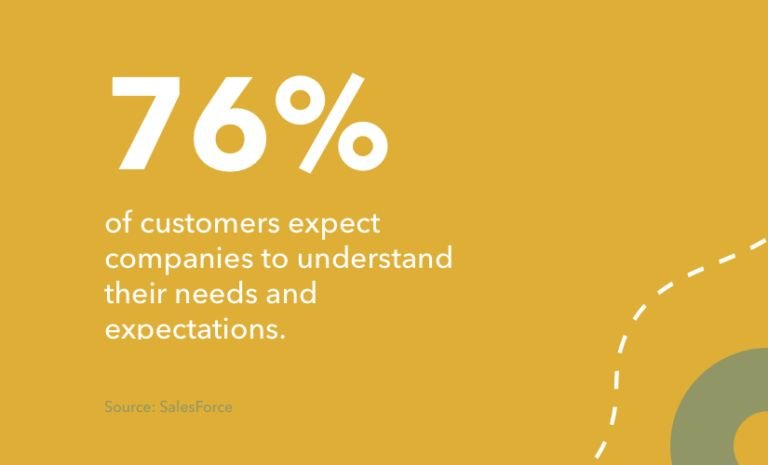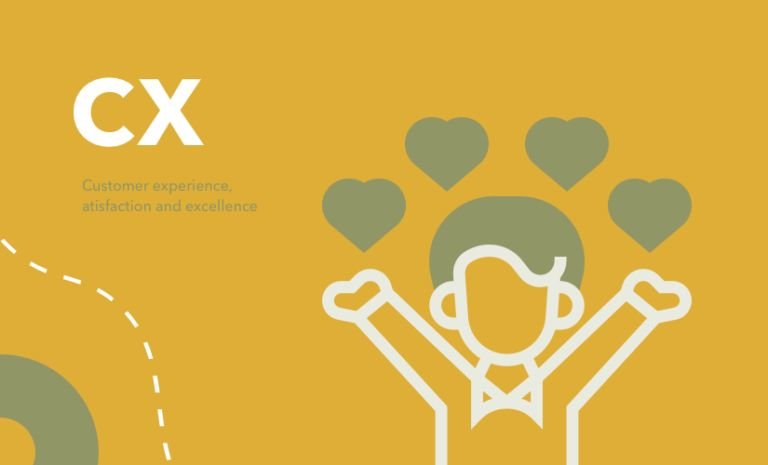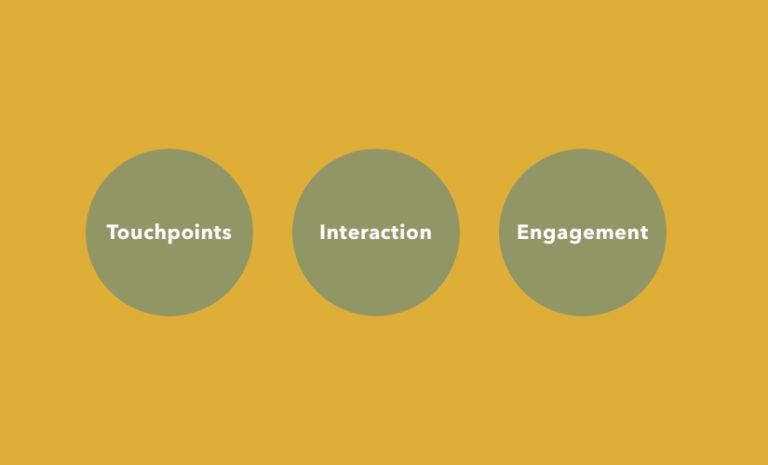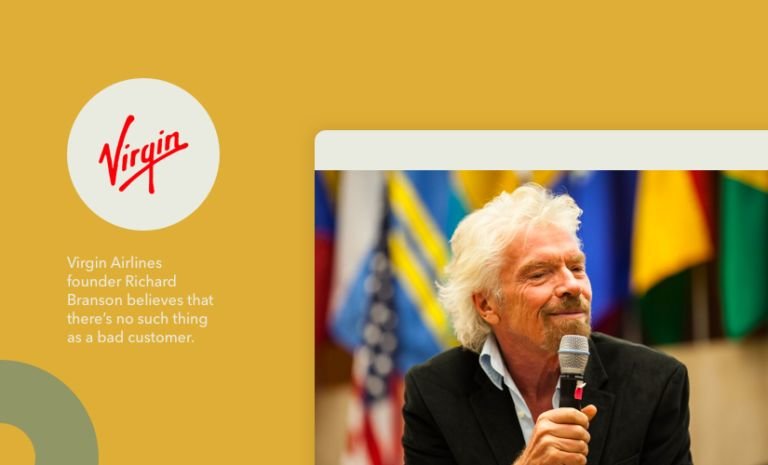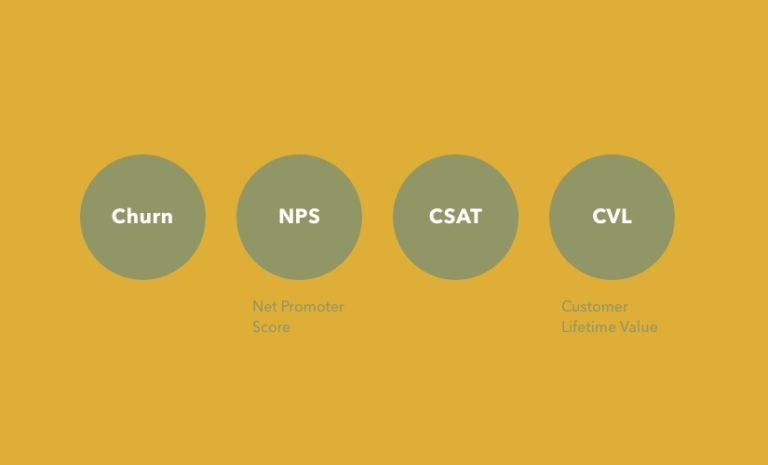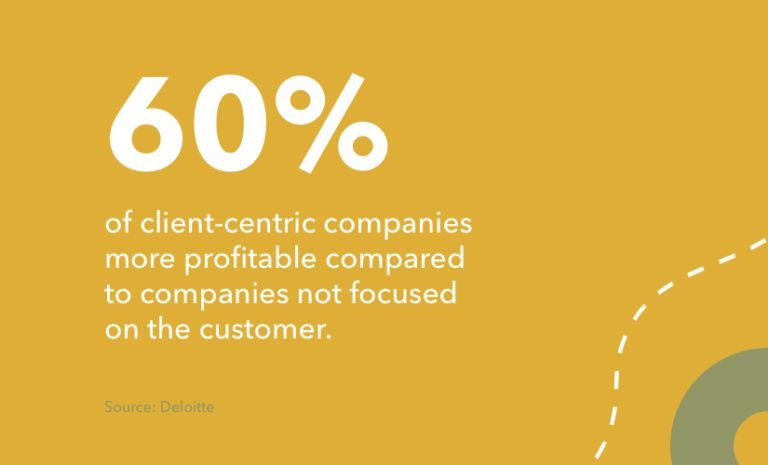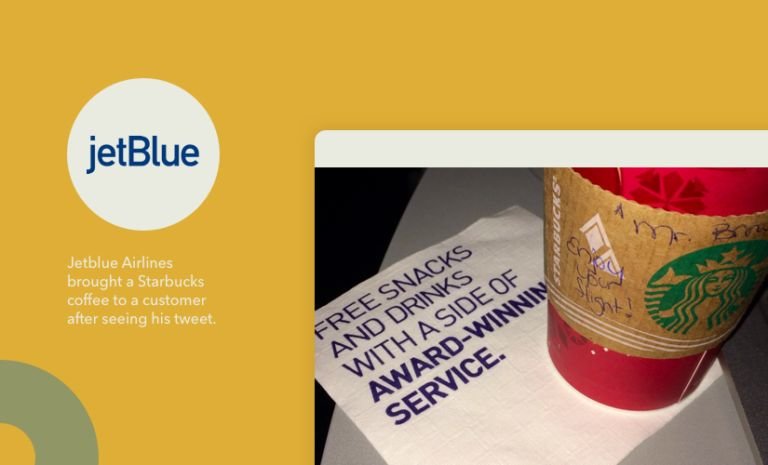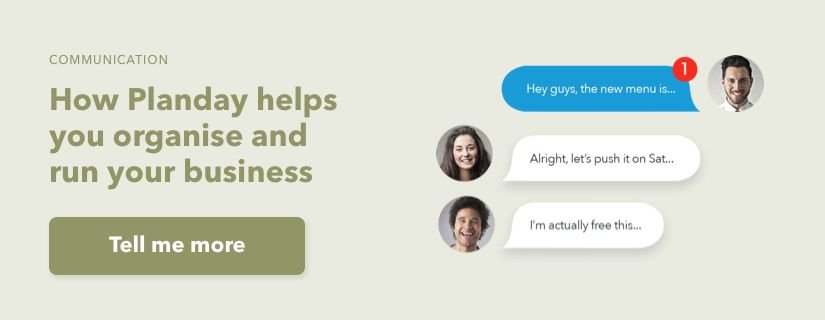
Article
5 min read
Customer Experience - The Ultimate Guide
Brett Smith
Mar 17, 2020
Chapters
Customer Experience: The Ultimate Guide
Customer experience has a very real impact on your company’s bottom line. It affects customer churn, medium-to-long revenue and even your company’s reputation.
According to a Deloitte study, “client-centric companies are 60% more profitable compared to companies not focused on the customer”.
In this guide to customer experience we’ll look at definitions, why it’s important and how to implement effective customer experience (or CX).
First, let’s define it…
What is customer experience (CX)?
Customer experience essentially comes down to the interaction between the customer and supplier for the duration of their association. This might be a very short association (buying a drink, using a vending machine), one that takes the length of a plane journey (including buying the ticket and collecting luggage), or it might be an ongoing client-vendor relationship (like a B2B service or a subscription).
Customer experience also has several synonyms. Related terms include customer satisfaction, client satisfaction and even customer excellence.
This is a different discipline from customer acquisition (which we discussed in our comprehensive customer acquisition guide and our list-article on attracting new customers). So first, let’s nail down a definition for customer experience.
What counts as customer experience?
Customer service and customer experience are often referred to as the same thing, or even interchangeably. But they are not the same. Customer service is only a piece of the puzzle – one component in the machine.
Customer Experience (also known as CX) the intersection of people and product/service. And it has several moving parts.
Why is customer experience so critical to your business?
Before we get into examining these components, let’s look at why customer experience is so vital.
SalesForce wrote an eye-opening report on customer experience. Among some of its key statistics, 76% of customers expect companies to understand their needs and expectations. Does your company do that?
That smile on your customer’s face has real, and ongoing monetary value. This value can be seen in:
- Brand loyalty: your brand becomes trusted so that customers will buy existing and future products and/or services.
- Less customer churn: wooing clients and customers takes time and money. The fewer customers who move on, the healthier your business. Always aim for lower cost per acquisition (CPA).
- Happy customers become advocates: word of mouth and direct referral is one of the most effective and often most elusive marketing tools.
- More revenue: happy customers, unsurprisingly, are more likely to return.
- All these factors contribute to better business outcomes.
Conversely, a negative customer experience can lead to:
- Negative word of mouth: a recent Nielsen survey found that 92% of consumers trust word of mouth more than advertising. In other words, you can’t out-market bad word of mouth.
- Online bad reviews: now, more than ever, companies are vulnerable to online reviews and testimonials, on official channels (like online news outlets) and less formal ones (such as social media).
- Customers going to competitors: competition has never been fiercer for businesses, especially as competitors are easily found online – often on the same Google results page.
For a look at customer satisfaction, in a specific field, we have a guide to customer satisfaction in restaurants.
Customer experience stats and trends
Customer experience has seen seismic changes in recent years. The ubiquity of online shopping, social media and online reviews played a huge part in this.
Whereas customers used to stay with companies based on price or product, now customer experience plays a bigger part in how they choose who to do business with. According to Adobe’s recent business trends report, CX came out as the number one business opportunity for B2B organisations. This was followed by content marketing and data-driven marketing.
Even more compellingly, a report from PWC found that 86% of customers would pay more for a positive customer experience. And 49% of customers will make an on-the-spot purchase if they’ve received a more personalised experience.
And, going back to word of mouth, a study from analyst Esteban Kolsky found that 13% of unhappy customers will share their negative experience with at least 15 other people.
Customer experience has always been a priority, but how did it become even more prominent in recent years? There are a few contributing factors:
- Customer experience and communication have become more sophisticated, creating an increasingly competitive CX market.
- Personalisation is becoming more important, as brands use new marketing and technology to foster closer relationships with customers; social media, personalised ads based on browser experience, a shift towards more personable branding.
- As we do business online, the customer experience journey becomes longer – a 6-8-week delivery time, vs browsing in a store. And this relationship can continue with email marketing, social media and push notifications
- Leading products (both B2B and B2C) are becoming increasingly service-based with software as a service (SaaS) rising in prominence.
- Customer feedback sites are growing in profile and influence.
Mapping the customer experience journey
The customer journey is the experience from their first encounter with a company to the end of the relationship. So how does the customer journey begin and what does it entail?
Here’s an example of a customer journey:
- They’re walking, looking for something to eat.
- A sign or building catches their eye.
- They read the menu by the door, maybe seeing something reassuring (like a sticker mentioning that they were recommended, or a clipping of a review).
- They’re greeted and seated by a friendly waiter or host.
- They enjoy efficient service and good, reasonably priced food.
- The customer leaves a business card or email address, incentivised by a prize draw or future offers.
- An email or text informs them of upcoming deals or specials or a birthday discount.
Our Customer Acquisition post does a deep dive on the related subject of customer acquisition.
In a broader sense, a customer journey could be broken down like this:
- Touchpoints. The customer sees an ad, looks at your website or finds you via an online search.
- Interactions. With a personal trainer at your gym or barista at your café, for instance.
- Engagement. Signing up for your service or buying your product.
This customer experience and journey varies, of course, from industry to industry. Here’s an overview of the different kinds and what makes them distinct.
Digital customer experience
Online companies, and even offline ones with an online marketing presence, often focus on sales and marketing at the expense of experience. The key to effective digital customer experience is consistency: information submitted to a website should be in an app; a form that was started on desktop should have the option of being completed on mobile.
Additionally, the offline/real world experience should work in harmony: so, information shared online (about delivery times, opening hours and so on) should be accurate.
Retail customer experience
In retail, a positive customer experience is (naturally) much more tactile. Everything from the establishment’s décor (which should be welcoming and softly lit), to the layout being user-friendly to the staff remembering regular customers and their preferences play a part.
A good retail customer experience means knowledgeable staff, rewards for customer loyalty and pleasant, helpful communications (which might expand to email marketing).
B2B customer experience
Customer experience sometimes gets overlooked in the B2B sphere. According to B2B International, only 14% of B2B brands are truly “customer centric”. Instead, these companies focus on other marketing and sales tools.
Effective B2B customer experience means a commitment to ongoing, reactive communications. Your company should understand the customer’s needs and be enthusiastic about addressing them. This is manifested in getting to know the customer and acting accordingly; do they like longer reports or shorter ones? What’s most important to them, both as a business KPI and a way to make their everyday lives easier?
Omnichannel customer experience
Omnichannel customer experience has numerous touchpoints, working together for the customer. For instance, it might be a restaurant that has a social media page that engages with customers, an app that helps with bookings and lets them know of upcoming events (live music, for example) and a newsletter; all working with the restaurant itself to deliver personalised, quality customer experience.
What makes for a good customer experience?
Good customer experience puts the business in the customer’s shoes, anticipating their needs and making their lives run more smoothly.
This might be:
- A coffee shop that takes mobile orders to make people’s commute easier.
- Banks that open for mortgage and loan meetings before work.
- Hotels that never forget to include fresh flowers for regular customers.
As the examples above illustrate, it’s not enough to simply supply a quality product or service. You must also provide something special in the leadup to the service and maybe even afterwards.
It’s important to remember the power of word of mouth and repeat business: after all, very good and very bad customer experiences are equally memorable!
What makes for a bad customer experience?
So how does bad customer experience happen? You’ve probably experienced it yourself. Here are some negative experiences and how to avoid them for your customers…
The Problem: Customers having to wait too long for service.
The Solution: Adequate staff numbers, taking big occasions into account (holidays, Black Friday and so on) when staffing, having a roster of on-call staff for emergencies. We have an article on predicting and planning for customer flow.
The Problem: Customers having to repeat complaints, issues or information.
The Solution: A clear chain of command and communication along with a database of information for ongoing issues, especially when it comes to a customer complaints.
The Problem: Delivery expectations not being met.
The Solution: Offering conservative estimates for delivery times, and maintaining the chain of delivery and logistics, especially during rush times.
The Problem: A customer needs things done that are beyond the traditional policies or procedures that a company has in place (a meal refund, for instance).
The Solution: This is a case of a company putting policies ahead of customer needs. Instead, re-prioritise to suit the customer, not the company. If it’s an ongoing issue, take a look at company policies that are unpopular with customers.
The Problem: A customer’s communication (or grievance) on social media is dismissed or belittled.
The Solution: Adequate social media training. As a whole, consumers are mastering social media faster than businesses are. Don’t establish a social media account until you’re ready to do so. This means allocating time to manage the social media accounts and ensuring that a properly trained person is in charge of them (even if that person is you).
How to enhance your customer’s experience
There are numerous CX best practices, rules of thumb to follow if you want your business to be more customer-focused. First, we’ll take a look at these pillars, then we’ll go into more detail on how to implement some of the most important best practices.
- Understand your ideal customer. What motivates them, what annoys them, why did they choose your business over others? Do some interviews and research if you have to
- Reverse engineer your ideal customer experience. Try your customer journey with both your company and a rival one. Take notes, especially at points that are frustrating or need improvement
- Gather customer feedback. Encourage customer feedback (whether it’s online or in cards on-premises) and collate them, try to find patterns or common compliments or complaints
- Assess your competition’s CX. Look at your direct competitors’ offerings and how they bring their customers on the journey. How is it better than yours and what can you imitate or improve upon?
- Offer personalised experience. This begins with knowing their name (in person or in correspondences) and extends to offering experiences that suit their particular needs and tastes
- Get buy in from higher ups. Implementing effective customer experience requires time and resources, as well as understanding from management
- Offer training to team members. We touched on this earlier regarding social media, but staff in all areas should be trained to maximize customer experience. Read our guide to customer service training.
- Measure customer satisfaction. This can be quantified, and we’ll be discussing it in more detail below. It can be hard to know where to start when creating a good customer experience template. Here are some steps that you can follow:
1. List your company values and how you would like to be perceived.
This should give a roadmap and a goal of the kind of company you want to be. For instance, Zappos has 10 core values that they adhere to, including “deliver wow through service” and “embrace change”.
2. Create customer personas.
This might be more common than you think and can be done for any industry. Talk to the customer-facing staff and draw out common traits and requirements for customers, creating a “type”.
For example, a loan manager in a bank might have customers who are impulsive, cautious, spendthrift, or practical. A restaurant might have lingerers, big spenders, laptop-workers, families, and so on. You can then augment the kind of customer service based on what they need.
3. Build on personal relationships.
This means memorising names, remembering favourite orders or quirks and engaging in conversation (whether that’s in person on the business premises or via social media).
4. Seek feedback instantly.
If it’s a bar, restaurant or café, it’s nice if staff ask the customer how their experience was; or they might prefer an anonymous card to fill out.
5. And act on this feedback.
Address complaints, take them seriously (at least in an official capacity) and be especially expedient if the same complaint turns up more than once.
6. Keep an eye on ROI.
It’s a good idea to put a date on when you officially ramped up your customer experience, and then periodically check on revenue and other factors (like footfall) to see what impact it has had.
Customer service experience examples we love
Our favourite customer experience examples combine robust processes, attention to detail and the personal touch.
1. Jetblue Airlines brought a Starbucks coffee to a customer after seeing his tweet.
This is a perfect example of a small gesture that goes a long way. A passenger for Jetblue Airlines sent a tongue-in-cheek tweet complaining about the absence of a Starbucks in a Boston airport’s departure lounge. Jetblue’s social media team saw the tweet and organised for a coffee to be brought to his seat before takeoff.
1. Adobe addressed customer complaints before they happened.
Adobe experienced a service outage in 2017 due to problems with Amazon Web Services. Before any customers complained, Adobe went on social media to acknowledge the issue and to say that they were working on a solution. This acknowledgement was accompanied by a puppy video! It’s a good example of getting ahead of a customer issue, instead of waiting for complaints to arrive.
3. Nordstrom has a “say yes” policy.
The American department store chain has been in business for over 100 years, but their “say yes” policy is relatively new (likely a reaction to the growing appreciation for customer experience). Staff are encouraged to say yes to every customer request and demand, even if it’s not directly associated with Nordstrom themselves. Nordstrom once gave a refund to a customer for a tyre, despite the fact that Nordstrom don’t sell tyres.
4. Virgin Airlines believes that there’s no such thing as a bad customer.
Richard Branson famously said that “a complaint is a chance to turn a customer into a lifelong friend”. A famous example in Virgin Atlantic’s case was a long customer complaint about the food in first class. Branson personally invited this customer to help overhaul their onboard menu. For some companies, especially Virgin, a complaint is a gift – a chance to address something specific. In fact, we talked at length about why customer complaints are essential to a business and how to handle difficult customers.
Measuring customer experience
Customer experience, because it’s so connected with everyday, human experiences, might seem hard to measure. But there are metrics and KPIs when it comes to customer experience.
We cover these KPIs in more depth in our post about measuring customer satisfaction and customer experience.
But, broadly speaking, they can be measured the following ways:
- Churn: how often do regular customers leave and do they get replaced?
- Net Promoter Score (or NPS): this measures the ratio or difference in your company’s online promoters (i.e., happy customers) and detractor/complainants.
- CSAT: is a score based on customer satisfaction.
- CLV: or “customer lifetime value” refers to the total monetary value that a customer will bring over the course of their ongoing relationship with a business
Choosing a customer experience platform
There’s a range of software tools and platforms available to help you deliver better customer experience:
This is handy if your business has an app (and if you run a restaurant or a customer-service business, you probably should). IBM Tealeaf gives you insights into how customers are interacting with your app, allowing you to monitor specific activity (like spikes in interest in certain services, for instance).
Satmetrix helps you survey and communicate with customers, helping you to craft a customer experience suited to them. It also has the ability to post positive feedback directly onto social media.
This consolidates customer communications (from social media, email and online forms) into one hub, making their messages easier to manage and respond to.
Customer experience quotes to leave you inspired
Customer experience has been a hot topic for as long as there have been customers. Here are some of our favourite quotes on the subject:
“Do what you do so well that they’ll want to see it again and bring their friends.” – Walt Disney
“Every single interaction, the most minute details of interaction you have with a customer, are an opportunity for you to create something remarkable.” – Joey Coleman, EX Expert
“There is only one boss. The customer.” – Sam Walton
Planday: making it easier to run your business
Planday’s employee scheduling software helps you organise and run your business, and our communications features will help make your new customer experience ambitions more attainable.
Also, don’t forget to check out our blog, which has a wide range of in-depth articles on how to run a successful company.
